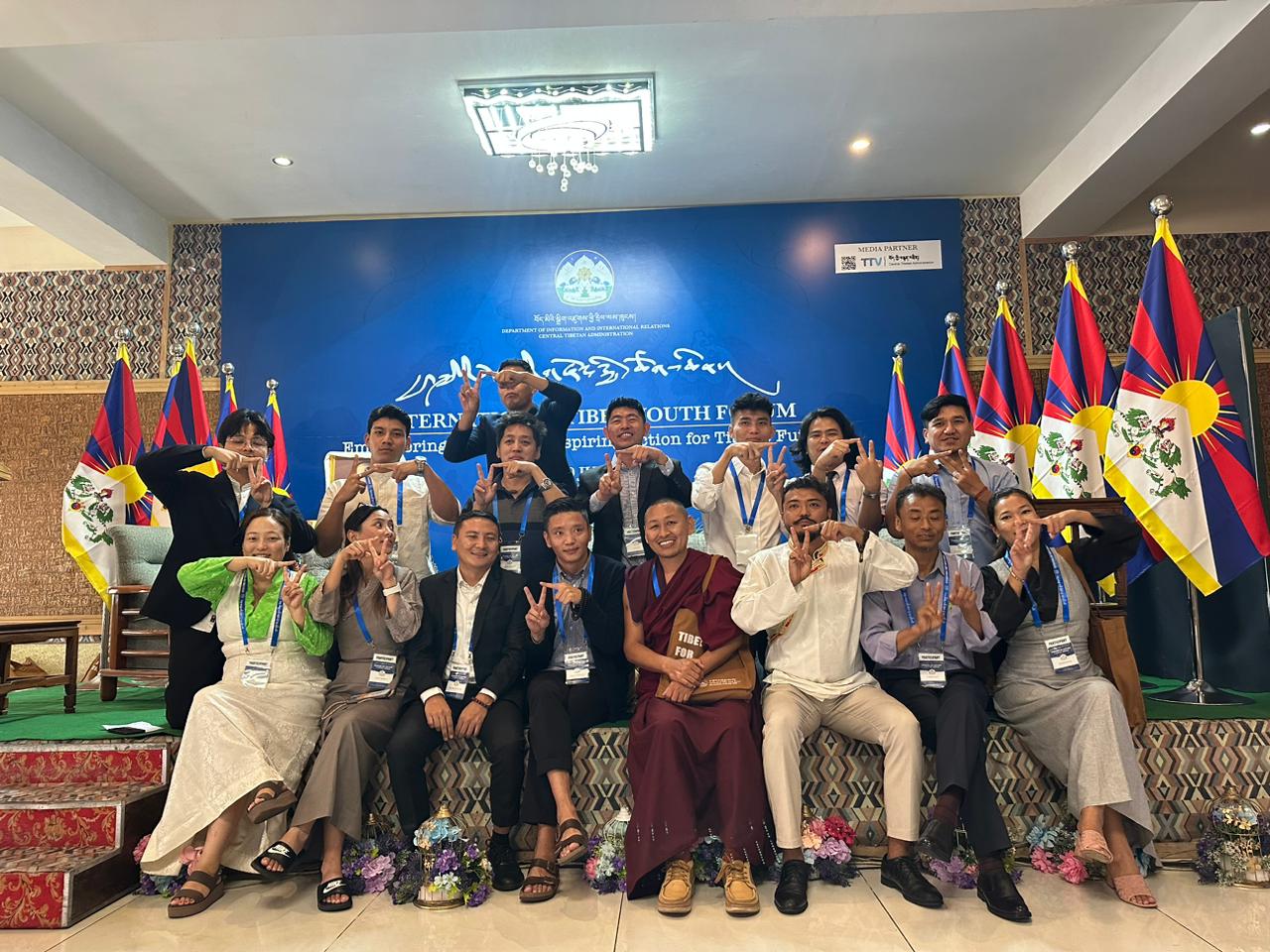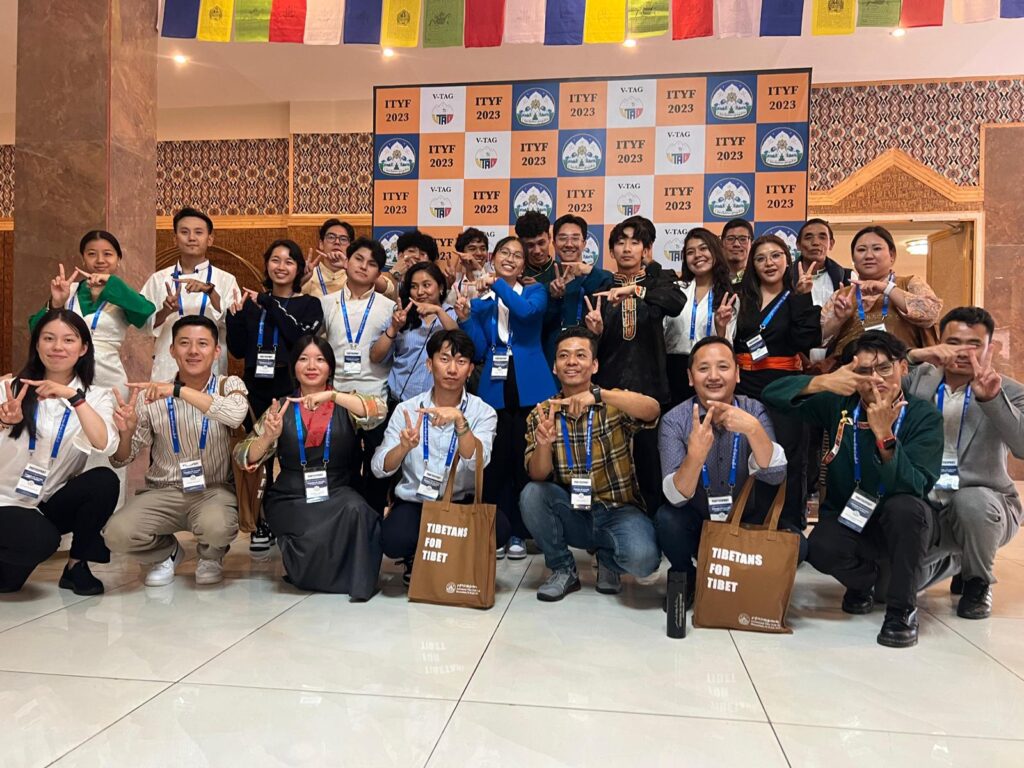V-TAG Mission
Fostering collaboration and empowering Tibetan youth to lead and advocate for Tibetan freedom.
We value unity and progress for the Tibetan cause, connecting tradition with innovation. While our foundation lies in the wisdom of our elders and the strength of our global supporters, our focus lies in empowering our youth. We believe they are not just the leaders of tomorrow, but the catalysts of today, bridging cultural legacies with contemporary solutions.
Our mission is thus two-fold: we aim to foster collaboration in the Tibetan freedom movement while empowering Tibetan youth as future leaders. Together, we aim to educate, inspire, and mobilize a global community for the preservation and advancement of Tibet’s heritage, rights, and future.
V-TAG (Voluntary Tibet Advocacy Group) started out as an initiative set out by the 16th Kashag, and supported by the CTA (Central Tibetan Administration).
We aim to provide every Tibetan the opportunity to optimize their potential in contributing to the non-violent, mutually beneficial, negotiated, and lasting solution to the Sino-Tibetan conflict.
V-TAG has now evolved into a dynamic and rapidly growing organization with a membership of over 400 diverse but passionate individuals across nearly 20 countries and spanning four continents.

Bottom-up autonomy in each country
Every member has the power to make a difference, no matter where they are. We believe in giving individuals the tools and freedom to act on local issues, directly contributing to our global mission.
By fostering local leadership and decision-making, we ensure that each region’s unique challenges and opportunities are addressed effectively. This approach not only brings agility to our efforts but also ensures they resonate more deeply within local contexts, thereby amplifying our overall impact.
Where one region may face challenges, another can step in to bridge the gap. We recognise that Tibetan freedom involves fighting for freedom for all, and V-TAG stands in solidarity with the Uyghurs, Hong Kongers, and all other groups oppressed by the CCP.

V-TAG’s Relationship With Other Organizations
Office of Tibet Branches
Every V-TAG group has an elected regional coordinator who spearheads its activities; V-TAG groups can be of any size. Every V-TAG group should coordinate its activities with its OOT (Office of Tibet).
OOT’s are representatives of the CTA, functioning similarly to embassies. There is an OOT for the following jurisdictions of:
OOT Washington DC: (Representative for North America) and UN Affairs.
OOT Geneva: (Representative for Central and Eastern Europe) Switzerland, (including UN Affairs in Geneva), Germany, Liechtenstein, Austria, Italy, the Vaticans, Malta, Greece, Turkey, San Marino, Czech Republic, Slovakia, Hungary, Slovenia, Croatia, Serbia & Montenegro, Bosnia & Herzegovina, Romania, Bulgaria, Macedonia, Albania.
OOT Brussels: (Representative for Western Europe, Magreb and EU) Belgium, France, Spain, Portugal, Netherlands, Luxemburg, Monaco, Andorra, Morocco, Algeria, Tunisia, Libya, EU Affairs and UNESCO.
OOT London: (Representative for Northern Europe) U.K, Ireland, Sweden, Iceland, Norway, Denmark (including autonomous Greenland), Finland, Lithuania, Latvia, Estonia and Poland.
OOT Moscow: (Representative for Mongolia and Commonwealth of Independence States, CIS) Armenia, Azerbaijan, Belarus, Georgia, Kazakhstan, Kyegyzstan, Moldova, Russia, Tajikistan, Turkmenistan, Ukraine and Uzbekistan.
OOT Canberra: (Representative for Oceanic and South East Asia) Australia, New Zealand, Fiji Islands, Papua New Guinea, East Timor, Indonesia, Malaysia and Singapore.
OOT Tokyo: (Representative for East Asia) Japan, North and South Korea and the Philippines.
OOT Taipei: (Representative for Taiwan) Taiwan.
Parliamentary Friends of Tibet
The OOT branches provide general assistance to V-TAG groups and create opportunities for V-TAG groups at international and multilateral events. Assisting V-TAG with their communications with domestic governments and members of parliaments.
This latter communication is also aided by Parliamentary Friends of Tibet, who are members of parliament that support our cause. An example is the Rt Hon. Tim Loughton of the UK parliament.
Tibet Advocacy Section
The TAS (Tibet Advocacy Section) is primarily responsible for promoting and advocating for the rights, freedoms, and autonomy of the Tibetan people and Tibet as a region. It exists under the DIIR (Department of Information and International Relations), which is a department of the CTA.